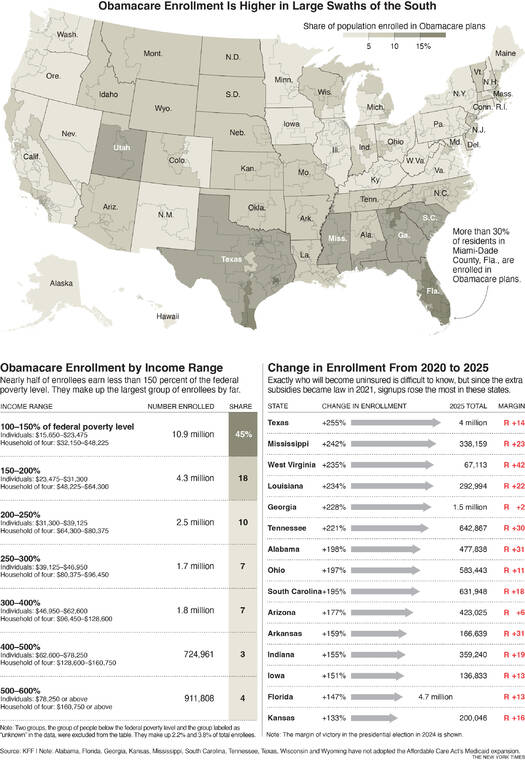More than 23 million Americans enrolled in Affordable Care Act (ACA) plans are bracing for significant increases in health care costs next year. This shift is expected if additional federal funding for subsidies expires as scheduled on December 31, 2023. In response to this looming deadline, Democratic lawmakers in Congress are withholding their votes on a government spending bill, pressing Republican leaders to extend these crucial subsidies that help reduce insurance costs for individuals purchasing coverage in ACA marketplaces.
Since the introduction of this extra funding in 2021, enrollment in ACA plans has more than doubled. Although these enrollees are distributed across the country, a notable concentration exists in several red states. These states, which have opted not to expand Medicaid programs for poor, childless adults, account for a substantial portion of those who rely on ACA subsidies. Approximately 57% of individuals with ACA insurance reside in Republican congressional districts, highlighting a significant divide in health care access linked to state policy decisions.
The disparity stems from increased enrollment in states that have not expanded Medicaid since the ACA encouraged such measures in 2014. The ACA aims to provide coverage to the poorest Americans through Medicaid and to offer subsidies for those with slightly higher incomes. However, a segment of the income distribution overlaps, leaving individuals eligible for Medicaid in states that provide it, as well as for subsidies in states that do not. This situation has made more low-income Americans eligible for subsidies in states lacking comprehensive Medicaid coverage.
Enrollment in ACA plans has surged in six red states—Texas, Louisiana, Mississippi, Tennessee, Georgia, and West Virginia—where subsidies have become more generous since 2021. Notably, both West Virginia and Louisiana have expanded their Medicaid programs. In South Florida, a region with a high concentration of low-wage workers and early retirees, ACA coverage has gained significant traction.
Most congressional districts with the highest ACA enrollment are located in states won by Donald Trump during the presidential election, although not all are represented by Republican lawmakers. Individuals with relatively low incomes constitute the largest group of enrollees. Nearly half of consumers nationwide earn less than 150% of the federal poverty level, which is about $24,000 for a single person or $48,000 for a family of four. Many in this demographic work in low-wage jobs that do not provide health insurance, hold part-time positions, or engage in gig work.
The additional subsidies have proven particularly beneficial for this vulnerable group. Those who select one of the two lowest-cost plans in their market can avoid monthly premium payments altogether. Critics argue that the generosity of these subsidies has led to cases of fraud. If the subsidies are not renewed, individuals in this income bracket could see their premium costs rise to between $27 and $82 monthly, placing further financial strain on already struggling families.
As the deadline approaches, the outcome of congressional negotiations will be critical in determining the future affordability of health care for millions of Americans.






































































